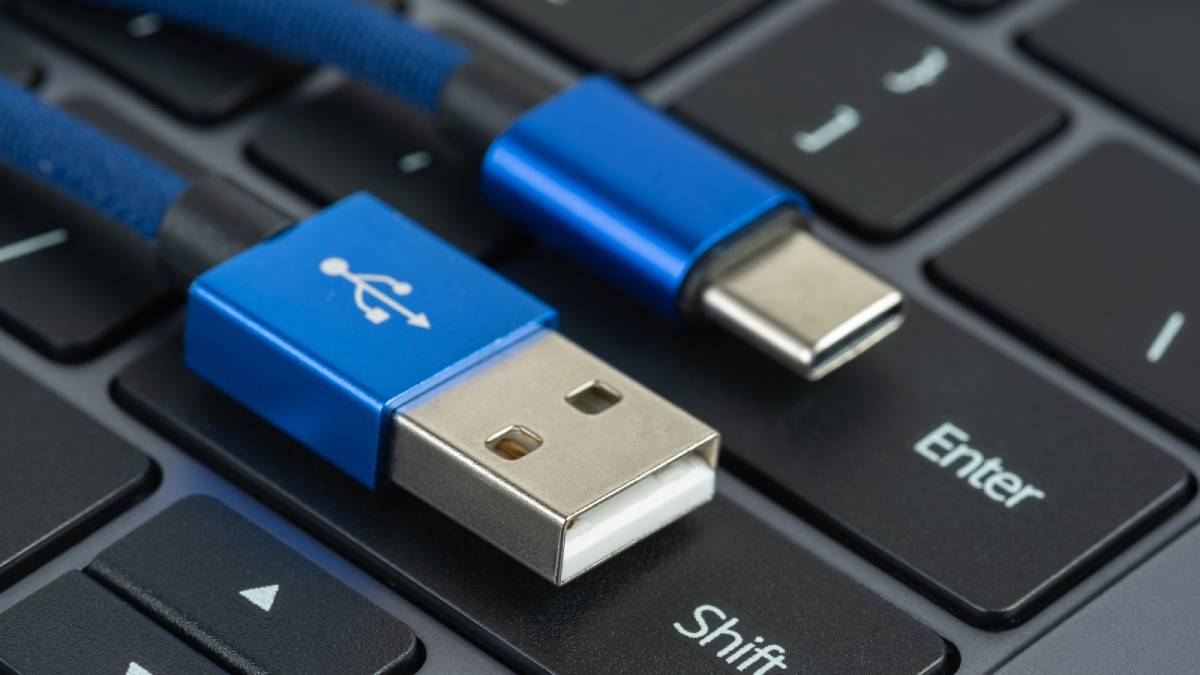
Are you looking to juice up your devices quickly? Then say hello to the USB-C and USB-A Fast Charging Cable! This innovative cable bridges the gap between the latest USB-C technology and your existing USB-A devices, all while delivering a powerful charging boost.
USB-C to USB-A
A USB-C to USB-A cable is a connector bridge between the new wave of USB-C devices and the vast world of existing USB-A devices. A USB-C to USB-A cable can connect a device with a USB-C port to a device with a USB-A port. For example, you could use a USB-C to USB-A cable to connect a new laptop with a USB-C port to an external hard drive with a USB-A port. Here’s a breakdown:
Connectors:
USB-C: The newer type, known for its small, symmetrical shape. It allows plugging in upside down, which is a welcome convenience. It also boasts faster data transfer speeds and higher power delivery than older USB versions.
USB-A: The classic rectangular USB connector, widely used for years. It requires plugging in a specific way. While still common, USB-A is gradually being replaced by USB-C.
Functionality: This cable allows you to connect a device with a USB-C port (like a new laptop) to a USB-A port (like an external hard drive).
Here’s what makes this cable a game-changer:
Universal Compatibility: Connects your new USB-C phone, tablet, or laptop to standard USB-A chargers, power banks, and computer ports.
Reversible Design: No more struggling to find the “right” side – the USB-C connector plugs in effortlessly, any way you turn it.
Fast Charging Power: Supports faster charging protocols to get your devices back to 100% quicker. (Optional: You can mention specific wattage here if the cable supports it).
Data Transfer: Not just for charging, this cable can also transfer files between your devices at high speeds.
The benefits of a USB-C to USB-A cable in a nutshell:
- Connects new to old: Bridge the gap between your new USB-C devices and existing USB-A chargers, power banks, and computers.
- Faster Charging (optional): Many cables support faster charging to get your devices back up and running quicker.
- Double duty: Charge and transfer data between devices at high speeds.
- No more fumbling: The reversible USB-C connector plugs in easily whenever you turn it.
Features of a USB-C to USB-A cable:
Universal Compatibility: Connects new USB-C devices to your existing USB-A chargers, power banks, and computer ports.
USBC to USBA cable with phone and computer
Reversible Connector: The USB-C connector is symmetrical so that you can plug it in any way, unlike the rectangular USB-A connector with a specific orientation.
USBC connector
Faster Charging: Many USB-C to USB-A cables support faster charging protocols, like Power Delivery (PD), which can significantly reduce device charging time. However, the cable and the device must support the same fast-charging protocol.
Data Transfer: This cable isn’t just for charging; it can also transfer files between your devices at high speeds, depending on the USB version supported by the cable (USB 2.0, 3.0, or 3.1).
Cable Length: Choose a length that works for your needs. Common lengths are 1 meter (3.3 feet) and 2 meters (6.6 feet).
Durability: Look for a cable with a braided nylon exterior for added strength and tangle resistance.
Brand Reputation: Choose a cable from a reputable brand to ensure quality and performance.
If you want to buy this product, go with the below links
- https://www.amazon.in/s?k=usb+c+to+usb+a&i=computers&adgrpid=61642047529&ext_vrnc=hi&hvadid=398130268727&hvdev=c&hvlocphy=9147001&hvnetw=g&hvqmt=e&hvrand=233047556067254354&hvtargid=kwd-301613263095&hydadcr=21229_1979694&tag=googinhydr1-21&ref=pd_sl_8fanx8zkin_e
- https://www.apple.com/in/shop/product/MJ1M2ZM/A/usb-c-to-usb-adapter
- https://www.flipkart.com/go-shops-black-usb-type-c-female-male-adapter-connector-works-laptops-chargers-and-more-devices-standard-interface-phone-converter/p/itmf0eae2e0ba418
- https://search.google.com/u/2/search-console/performance/search-analytics?resource_id=https%3A%2F%2Fwww.findcult.com%2F
Conclusion
In short, a USB-C to USB-A cable acts as a bridge, ensuring your new USB-C devices can seamlessly connect and interact with the abundant world of USB-A devices you already own. Upgrade your charging experience and ensure seamless connectivity with the USB-C to USB-A Fast Charging Cable.
